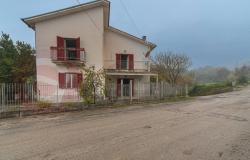Experts Discover The Secret Of Ancient Roman Concrete

An international team of experts has discovered why ancient Roman concrete has proved to be so durable: seawater.
A team led by Paulo Monteiro of the U.S. Department of Energy’s Lawrence Berkeley National Laboratory (Berkeley Lab), a professor of civil and environmental engineering at the University of California, Berkeley, made the discovery after examining a sample of concrete taken from the ancient harbour of Baiae in Pozzuoli Bay, in the north-western region of the Bay of Naples.
The composition of the sample found at the underwater site of Baiae differs from modern concrete significantly, making it more durable. Roman concrete was also manufactured in a less environmentally damaging way than modern concrete. Portland cement employed underwater starts to erode after 50 years, whereas the Roman formula has survived for 2,000 years. Researchers hope that the lessons learned from the ancients could enable contemporary industrial engineers to adopt the ancients’ methods to produce more eco-friendly durable concrete.
“It’s not that modern concrete isn’t good – it’s so good we use 19 billion tons of it a year,” says Monteiro. “The problem is that manufacturing Portland cement accounts for 7% of the carbon dioxide that industry puts into the air.”
Monteiro’s team found that the Romans used less lime to make concrete and made it from limestone baked at 1,652F or less, meaning that less fuel was used than that required to create modern Portland cement. When making underwater structures, the Romans mixed lime and volcanic ash to form mortar. The mortar and volcanic tuff were packed into wooden forms and seawater triggered a chemical reaction causing the lime to hydrate. Thus, water molecules were incorporating into its structure and reacted with ash to cement the mixture. The glue formed is stronger that that used to hold together modern concrete.
Location
You may also be interested in...
Latest property in Campania
574 m²
4 Bedrooms
550000
217 m²
3 Bedrooms
108000
96 m²
2 Bedrooms
58000
615 m²
0 Bedrooms
185000
362 m²
3 Bedrooms
379000
482 m²
9 Bedrooms
750000












